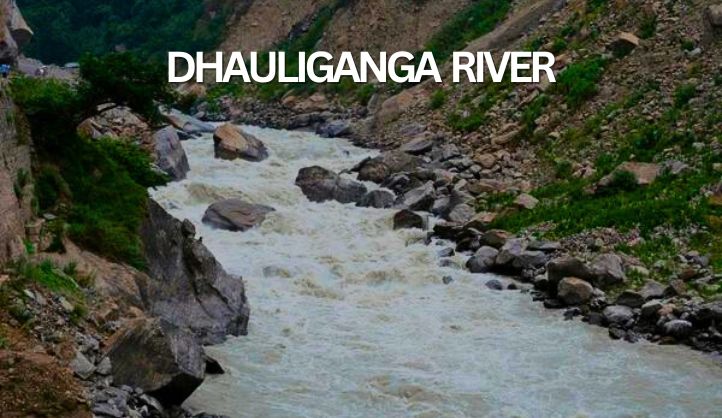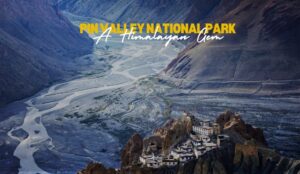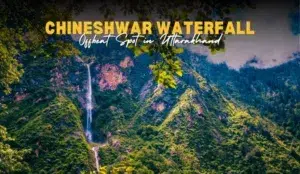Imagine a river that winds through towering mountains, bringing life to everything in its path. This is the Dhauliganga River, a vital waterway in northern India that captivates both locals and visitors with its beauty and power. But there’s much more to this river than meets the eye. Let’s dive into the fascinating world of the Dhauliganga River and explore its journey, significance, and the stories it holds.
The Journey of Dhauliganga River
The Dhauliganga River begins its journey high in the Himalayas. Its source lies in the glaciers near Nanda Devi, the second-highest mountain in India. From here, the river flows through the rugged terrain of Uttarakhand, making its way to the Alaknanda River, one of the headstreams of the sacred Ganges.
The Path Less Traveled
The course of the Dhauliganga is not an easy one. It twists and turns through deep gorges and narrow valleys, sometimes appearing as a gentle stream and at other times as a roaring torrent. This river is a lifeline for remote regions, providing water for drinking, and irrigation, and supporting a diverse ecosystem.
The Significance of the Dhauliganga River
Cultural Importance
For the people living along its banks, the Dhauliganga River is much more than just a water source. It holds deep cultural and spiritual significance. The river is revered in local traditions and is often associated with myths and legends. Many festivals and rituals are centered around its waters, highlighting its importance in daily life.
Ecological Role
The Dhauliganga River supports a wide variety of flora and fauna. Its waters nurture dense forests and sustain numerous species of fish, birds, and other wildlife. This biodiversity is crucial for maintaining the ecological balance of the region. Additionally, the river’s flow helps to prevent soil erosion and supports agriculture in the valleys.
The Challenges Faced by Dhauliganga River
Environmental Threats
Like many rivers in the Himalayas, the Dhauliganga faces several environmental challenges. Climate change has led to the melting of glaciers, which affects the river’s flow. Deforestation and human activities have also led to pollution and habitat destruction. These factors threaten the delicate ecosystem that the river supports.
Human Impact
The construction of dams and hydropower projects on the Dhauliganga River has been a topic of debate. While these projects provide much-needed electricity and economic benefits, they also disrupt the natural flow of the river and can have adverse effects on local communities and wildlife. Balancing development and conservation is a key challenge for the region.
Stories from the Banks of Dhauliganga
A Fisherman’s Tale
Consider the story of Ram, a fisherman from a small village along the Dhauliganga. For generations, his family has relied on the river for their livelihood. Ram talks about how the river’s changing flow patterns have affected fishing, making it harder to predict where the best catches will be. Yet, he remains hopeful, adapting to the river’s moods and finding new ways to sustain his family.
The Pilgrim’s Path
Every year, thousands of pilgrims visit the Dhauliganga River, seeking spiritual solace and blessings. The river’s waters are considered holy, and pilgrims often take a dip in its chilly waters as part of their rituals. The journey to the river is not easy, but the serene beauty and spiritual aura of the Dhauliganga make it a rewarding experience.
The Future of Dhauliganga River
Conservation Efforts
Efforts are being made to protect and preserve the Dhauliganga River. Environmental groups and local communities are working together to promote sustainable practices and raise awareness about the river’s importance. Projects aimed at reforestation, pollution control, and habitat restoration are underway to ensure the river’s health for future generations.
Sustainable Development
There is a growing recognition of the need for sustainable development in the region. Hydropower projects are being re-evaluated to minimize their environmental impact, and alternative sources of energy are being explored. The goal is to find a balance that allows for economic growth while preserving the natural beauty and ecological integrity of the Dhauliganga River.
Some Other Rivers in Uttarakhand
Uttarakhand, often referred to as the “Land of the Gods,” is blessed with numerous rivers that originate in the Himalayan region. These rivers not only provide water for drinking and irrigation but also hold significant cultural and religious importance. Here are some of the major rivers of Uttarakhand:
1. Ganga (Ganges)
The Ganga is the most sacred river in India, and it originates from the Gangotri Glacier in Uttarakhand. It flows through the state and passes through major towns like Rishikesh and Haridwar, where it holds immense religious significance.
2. Yamuna
The Yamuna River, another major river in India, originates from the Yamunotri Glacier in Uttarakhand. It flows through the state before entering Himachal Pradesh and eventually merging with the Ganga in Allahabad (Prayagraj).
3. Alaknanda
The Alaknanda River is one of the two headstreams of the Ganga and originates from the Satopanth Glacier. It flows through towns like Badrinath and Rudraprayag before meeting the Bhagirathi River at Devprayag to form the Ganga.
4. Bhagirathi
The Bhagirathi River is the other headstream of the Ganga. It originates from the Gaumukh Glacier near Gangotri. The river meets the Alaknanda at Devprayag to form the Ganga.
5. Mandakini
The Mandakini River originates from the Chorabari Glacier near Kedarnath. It flows through the Kedarnath valley and meets the Alaknanda River at Rudraprayag.
6. Saraswati
The Saraswati River in Uttarakhand is considered sacred and is one of the tributaries of the Alaknanda. It meets the Alaknanda at Keshav Prayag in Mana village, near Badrinath.
7. Pindar
The Pindar River originates from the Pindari Glacier in the Kumaon region of Uttarakhand. It flows through the Pindar Valley and joins the Alaknanda River at Karnaprayag.
8. Nandakini
The Nandakini River originates from the Nanda Devi Glacier. It flows through the Chamoli district and joins the Alaknanda River at Nandprayag.
9. Tons
The Tons River is the largest tributary of the Yamuna River. It originates in the upper Garhwal region and flows through the Jaunsar-Bawar region before merging with the Yamuna.
10. Kali (Sharda)
The Kali River, also known as the Sharda River, forms the eastern boundary between India and Nepal in Uttarakhand. It flows through the Pithoragarh district and is known for its scenic beauty.
11. Ramganga
The Ramganga River originates from the Doodhatoli hills in the Pauri Garhwal district. It flows through the Corbett National Park and eventually joins the Ganga River in Uttar Pradesh.
These rivers, with their pristine waters and stunning landscapes, are not only lifelines for the people of Uttarakhand but also attract pilgrims, tourists, and adventure enthusiasts from around the world.
Conclusion
The Dhauliganga River is more than just a river; it is a lifeline, a cultural icon, and a symbol of the delicate balance between nature and human activity. Its journey from the glaciers of Nanda Devi to its confluence with the Alaknanda is a testament to the power and resilience of nature. As we move forward, it is crucial to protect and cherish this remarkable river, ensuring that it continues to nurture and inspire for generations to come.
FAQs About Dhauliganga River
1. Where does the Dhauliganga River originate?
The Dhauliganga River originates from the glaciers near Nanda Devi, the second-highest mountain in India, located in the state of Uttarakhand.
2. What is the significance of the Dhauliganga River?
The Dhauliganga River holds cultural, spiritual, and ecological importance. It supports local communities, provides water for irrigation, and sustains diverse wildlife.
3. What are the main challenges faced by the Dhauliganga River?
The main challenges include environmental threats like climate change and pollution, as well as the impact of human activities such as dam construction and deforestation.
4. How does the Dhauliganga River support local livelihoods?
The river provides water for drinking and irrigation, supports fishing, and attracts pilgrims and tourists, all of which contribute to the local economy.
5. What conservation efforts are being made for the Dhauliganga River?
Conservation efforts include reforestation, pollution control, and habitat restoration projects. Local communities and environmental groups are working together to promote sustainable practices.
6. How can sustainable development be achieved for the Dhauliganga River?
Sustainable development can be achieved by balancing economic growth with environmental protection. This includes re-evaluating hydropower projects, exploring alternative energy sources, and promoting eco-friendly practices.





